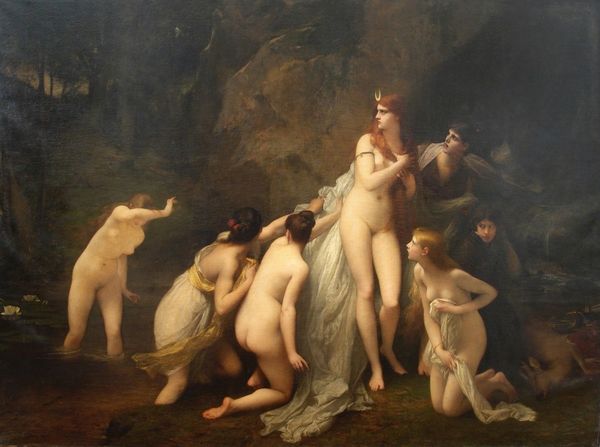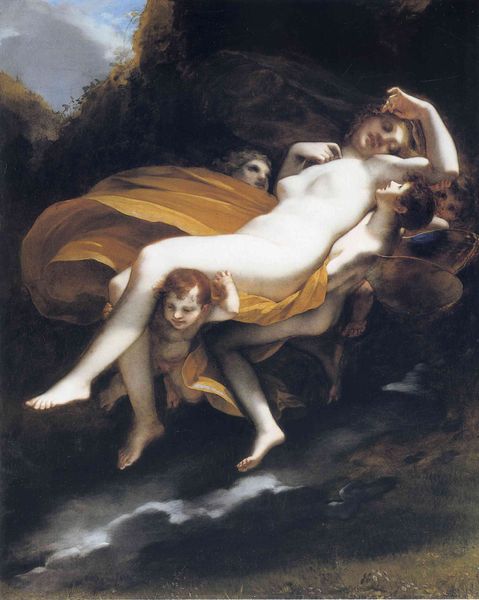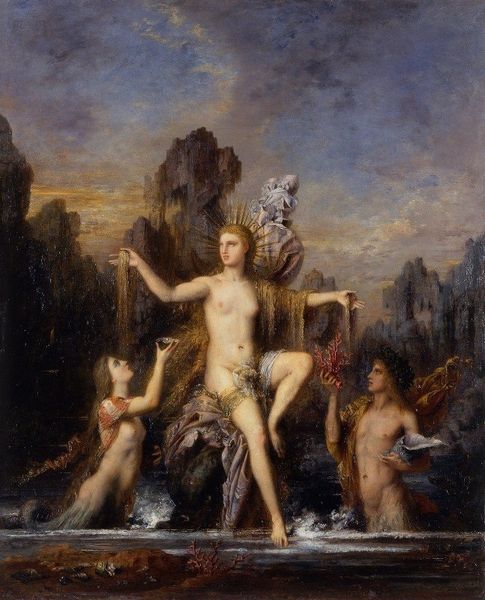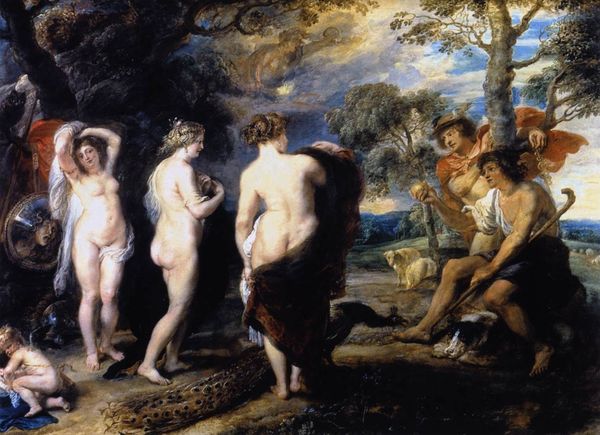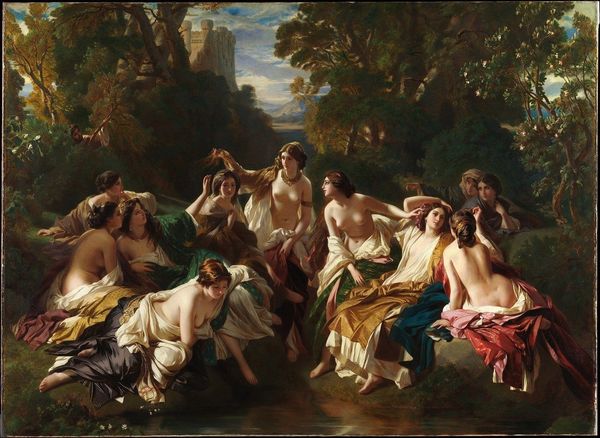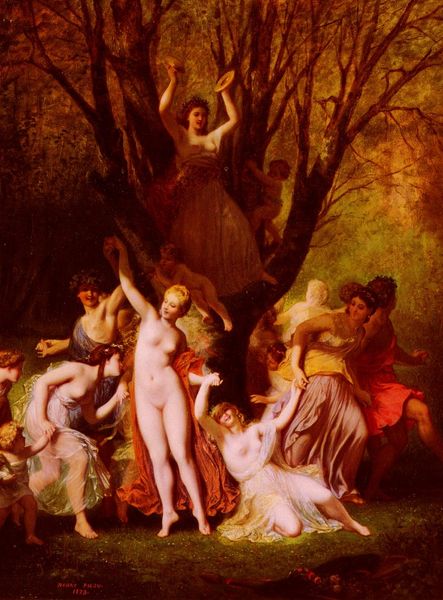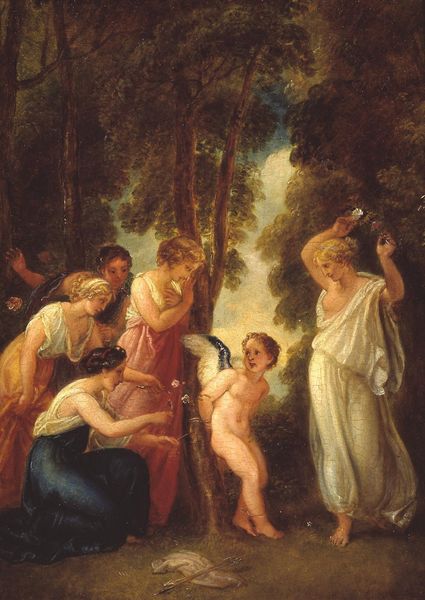
painting, oil-paint
#
painting
#
oil-paint
#
landscape
#
figuration
#
romanticism
#
genre-painting
#
nude
Dimensions: 964 x 1358 cm
Copyright: Public domain
Curator: Ferdinand Georg Waldmüller painted "Women bathing at the brook" in 1848 using oil paint. It strikes me as a particularly picturesque scene, doesn't it? Editor: My first impression? It's all soft light and ambiguous glances, evoking a very staged, idealized vision of natural beauty. The color palette seems surprisingly muted for a scene one might expect to be filled with vibrant energy. Curator: Agreed. While there is a theatrical, staged element, it also invites scrutiny of the production behind it, given its emphasis on painting, figuration, and landscape. Editor: Yes, but note how the water, for instance, ripples – a traditional signifier of purity and rejuvenation – reflecting not the immediate physical environment but an inner state, an allegorical landscape of the soul, so to speak. And the bathers themselves become symbols… Curator: …Perhaps reflecting contemporary social ideals about modesty and femininity in a bourgeoise fashion. Consider the artist's approach: oil on canvas in 1848 involved a complex system of labor, patronage, and access to specific pigments and materials. These women aren't just bathing, they're products of their time. Editor: Of course. But doesn't the visual composition echo classical depictions of the Three Graces? Or perhaps more generally, recall ancient Roman bathhouses and their associations with leisure, purification, and even social gathering? Curator: But beyond any intended historical reference is the contemporary commercial transaction. The use of nudes within the context of romantic landscape caters to a voyeuristic gaze and the male-dominated market for paintings like these at the time. Editor: While you consider the marketplace dynamics, I can’t help but view their gestures and postures as echoes of established symbolic language. A gesture may have indicated fidelity, caution, or invitation according to a set of culturally acknowledged cues. Curator: And what this entails for today’s viewer is understanding art making, exhibition and its interpretation remains bound to social history. Editor: Absolutely. And appreciating that imagery has immense staying power. We are not free from the weight of their legacy in contemporary culture.
Comments
No comments
Be the first to comment and join the conversation on the ultimate creative platform.
